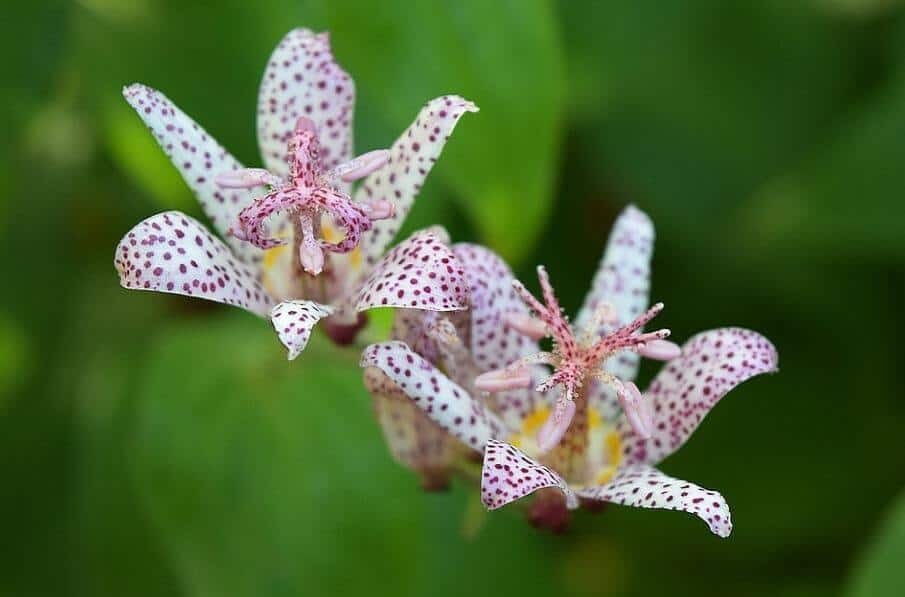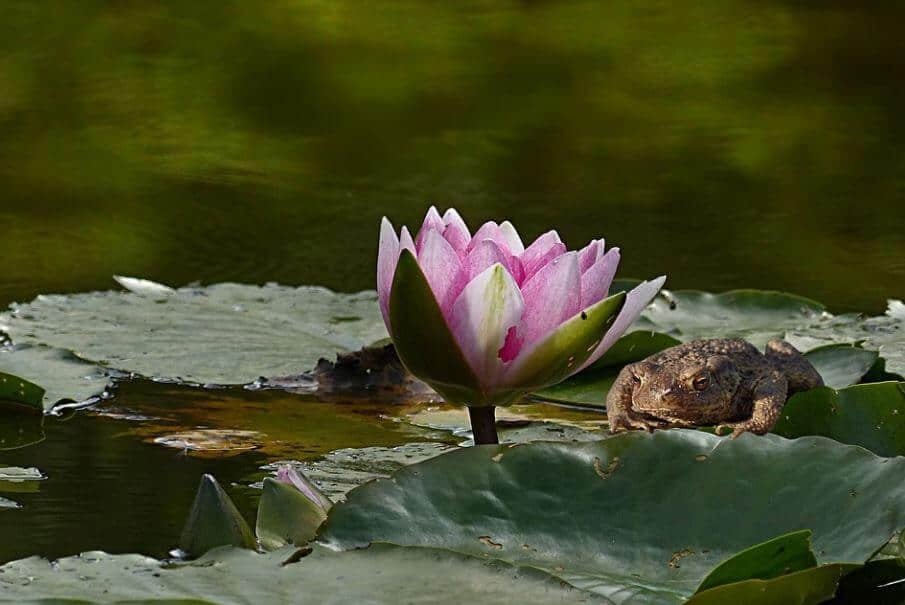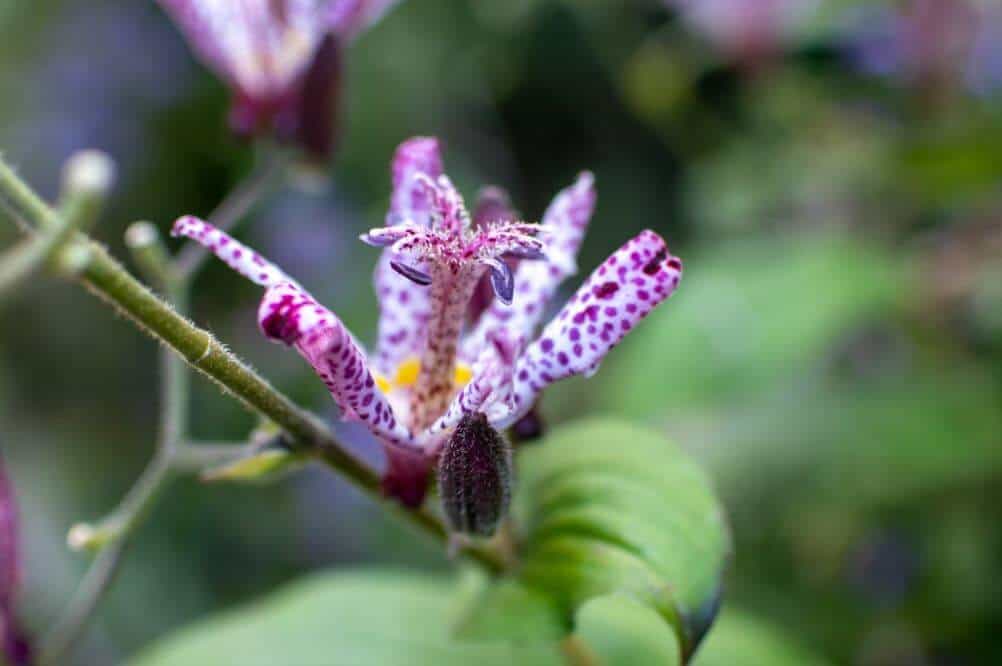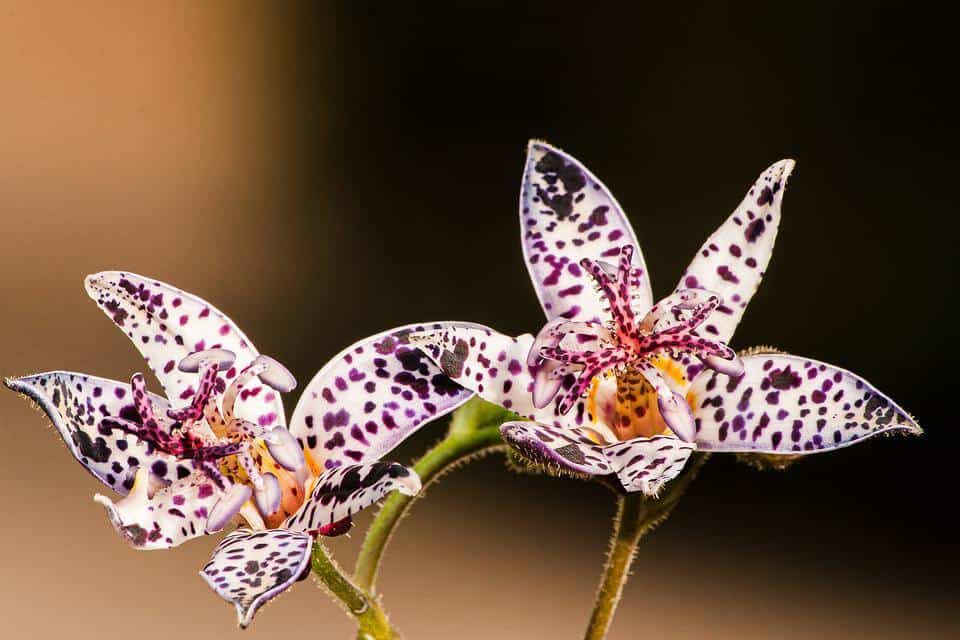Last Updated on January 11, 2023 by a Friendly Gardener
Toad lily is the common English name bestowed upon the genus of Tricyrtis, a stunning Asian flowering plant. It belongs to the Liliaceae family. The genus has around 20 species, of which the most common garden variety are Tricyrtis formosana and Tricyrtis hirta.
In the lily family, Tricyrtis hirta is known as the hairy toad lily or the Japanese toad lily. It is a native Japanese species found along the stream banks of the islands of Honshu, Kyushu, and Shikoku and on shady cliffs.
It is a hardy plant that adores the shade. It can withstand adverse conditions and is pretty disease resistant. If you have a shaded garden, toad lilies are the perfect addition to it!
This perennial plant grows star-shaped, orchid-like flowers. The ornamental variety is a sight to see. The flowers come in colorful combinations, ranging from shades of white to purple. They are generously dotted with purple spots and have a yellow base.
They propagate from creeping rhizomes, blooming into a mottled collection of unique flowers with stalks that get as high as 2.5 feet. Even when not in bloom, the toad lily plant stands out with its vivid green foliage. As the name denotes, it is a rather hairy plant.
The distinguishable toad lily plant was introduced to the American garden as ornamentals only in recent years. Since then, it has been beautifying gardens in the hardiness zones 4 to 9. They grow in clumps, but they are not an invasive species.
Conditions for Growth

Perhaps you were strolling through your friend’s garden when you spotted a stunning toad lily plant. You instantly wanted it adorned in your garden! But what are the conditions for its growth? Let’s find out!
The common variety of toad lily can be grown in residential gardens. They need the right conditions to propagate and require very little maintenance thereafter.
Out in the wild, you are likely to find them along woodland edges, ravines, and nestled in tall grass. However, when grown in your garden under favorable conditions, they will grow tall and vibrant.
You may grow toad lilies using seeds, division of the toad lily bulbs, or stem cutting. The best time to plant them is right after the last of the snow has melted away.
What Is Their Attitude Towards Light?

They are quite partial to shade, so they prefer fully-shaded or partially-shaded areas to grow. Ideally, you should plant them in such a spot where they at least get a few hours of the morning sun.
These light requirements make them ideal for regions with moderate climates.
Make sure they are not under the full force of the sun as this will scorch them.
How Do They Like Their Soil?
In terms of soil conditions, they thrive in rich organic soil that has a consistent level of moisture—not too dry, not too wet! They require well-drained soil with a marginally acidic pH and enriched with lots of organic matter. If the soil is soggy and clumpy, the roots tend to suffocate, and you may find your plant suffering as a result.
What Is Their Temperature Tolerance?
Toad lilies are hardy plants. They can withstand colder climates, being hardy up to -15 degrees Fahrenheit. They can also survive warmer climates provided you shade them against the harsh sunlight. They can even withstand mild humidity.
How Are Their Thirst Levels?

Since they are hardy perennials, they can survive even on low levels of water. But they greatly favor being moist. Consistent moisture is key to their perkiness and beautiful bloom.
If you do not want your plant to look sickly, make sure your soil does not dry out. Additionally, make sure you do not overwater.
If your toad lilies are lacking in water, their leaves will start showing unsightly brown spots. On the other hand, if you overwater and make their soil soggy, rot could set in.
What Are Their Nutrient Requirements?
Toad lilies thrive off soil that is rich in nutrients. You can use compost or a weak organic fertilizer (at half strength) to meet their requirements.
What Are Their Pest Problems?
Unlike other garden planets, toad lilies are low maintenance. They do not have a major pest problem. They are also fairly disease resistant.
However, young growing plants may suffer the munch of slugs and snails. Even rabbits tend to hop in to eat at the flower buds and leaves.
You will find hummingbirds and butterflies drawn towards your toad lily during summer. The blossoms are an important nectar source during late summers.
When Do They Bloom?
Toad lilies thrive all year long. However, their beautiful flowers emerge from the buds in clusters of upright flowers during late summer and early fall, right before the temperatures drop dramatically.
Varieties of Toad Lily
Besides the common toad lily, there are many varieties of this vibrant perennial. There are several hybrids in addition to the original plants. Here are a few honorable mentions.
The ‘Tojen’ toad lily blooms in early fall with lavender flowers. It is a hybrid with large leaves and short stems.
Similarly, the ‘White Towers’ toad lily is yet another hybrid origin with hairy stems and leaves. They blossom white star-shaped flowers in late summer.
The ‘Tufted’ toad lily has small clusters of dark yellow blossoms with reddish spots on the inside.
Word of Caution
The showy toad lily plant is harmful to your pets. While the leaves are edible, the other parts of the plant are toxic. So if you are a cat or dog parent, make sure to keep your pets away from these plants.
The Parting Bloom

Toad lilies, with their unique blooms, make for an exotic addition to any garden—provided they are shaded!
They are friendly and get along quite well with other woodland species. Compared to other garden plants, they are quite easy to care for.
If you are a gardening enthusiast, then it is hard to resist the allure of these mesmerizing blooms. Give them some time and care, and watch them light up your garden!

